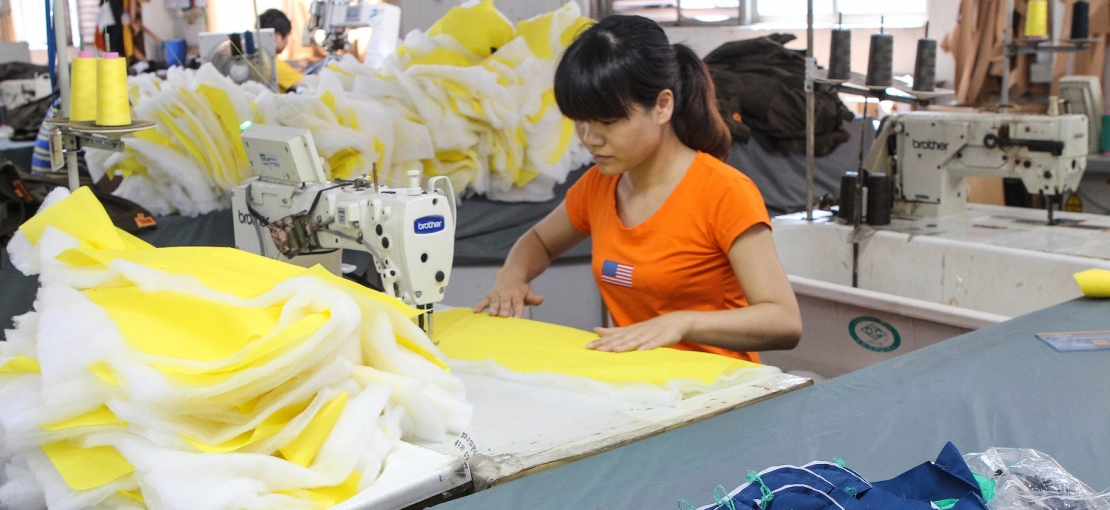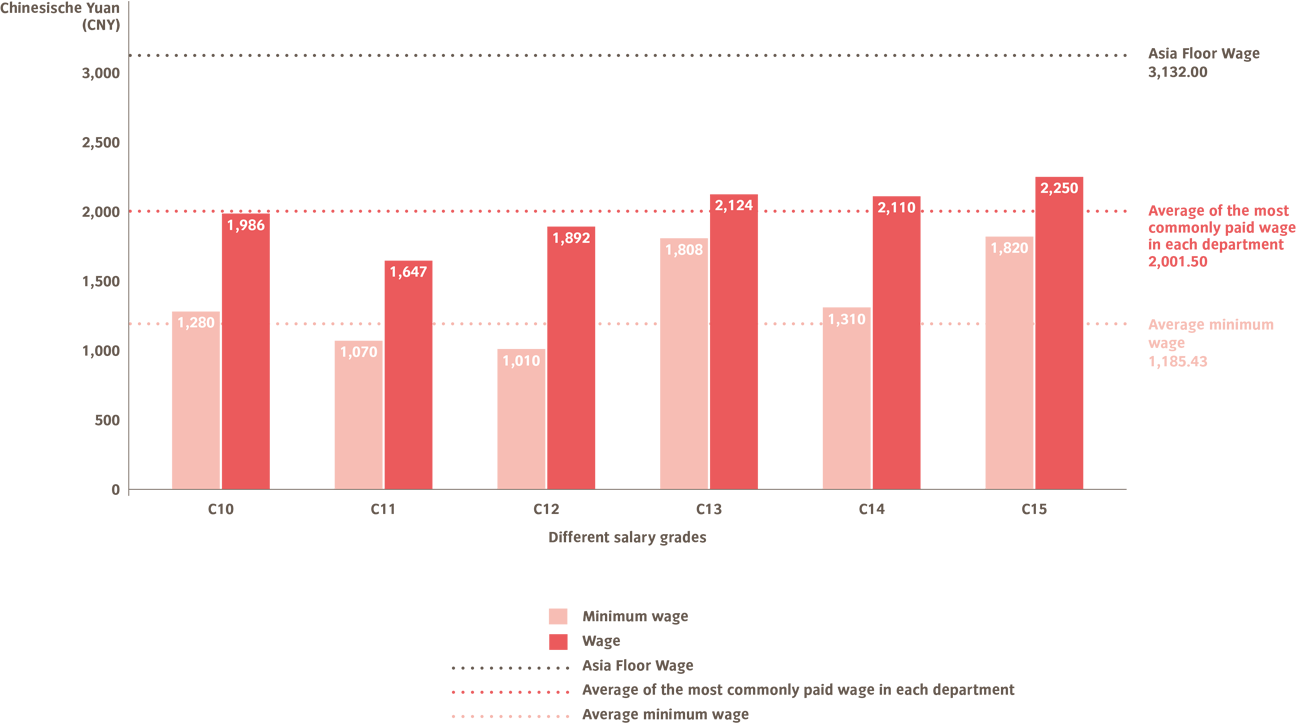
Fair wages
High wage levels at our producers
Our Chinese producers pay an average of 52 percent above the legal minimum wage and 25 percent below the Asian Floor Wage (AFW).
In Vietnam, the wages are an average of 66 percent above the legal minimum wage and 29 percent below the AFW. This shows us that our producers have good wage levels.
How we determine income levels
We cannot say for our producers, however, how high the standard starting salary is for each department, as we do not get this information from them or from the FWF. Therefore, the FWF has developed a „Wage Ladder”. In this ladder, three types of salary data are available for every production department (management & staff are not represented). The orientation is determined by the lowest, highest and most frequently paid wage paid in a department.
Wage Ladder Vietnam
Wage Ladder China
We use the most commonly paid wage for our evaluation. Taking into account the number of workers per department, we calculate the average for each producer. This is set as a percentage in relation to the legal minimum wage and to the Asian Floor Wage and in addition, depending on the country, the average is recalculated.
For one producer in China, data could not be determined during the audit, as there was double bookkeeping. This means that the team wasn’t given the proper documentation during the audit. This issue has already been discussed with the producer. Inspection of the contested documents will occur in 2015.
Some audits took place where no evaluation of a wage ladder was possible:
- One audit in Turkey – there was double entry bookkeeping here as well. The real data will be summarized in 2015. The producer is being handled separately due to the Syrian refugee situation.
- One audit in Myanmar, where there is no legislation on the minimum wage and no local stakeholders. The country is under construction; currently there is no data available to us. Nevertheless, the producer was audited based on existing data which could be transferred.
Problem: A lack of meaningful benchmarks
The problem with the calculation of fair wages is that there is no meaningful calculation of a „living wage". So far, the Fair Wear Foundation has drawn on the approach of the Asian Floor Wage.
But in most production facilities, this is not very meaningful because the different living conditions in different regions were not taken into consideration for these calculations. Nevertheless, in China there are already many local stakeholders who have defined realistic benchmarks, although not in each region. Therefore, we have no reliable statements that we can call upon when working with producers.
Obligation to pay a living wage
With its membership in the Fair Wear Foundation (FWF), VAUDE has made a long-term commitment to the payment of living wages. The current situation will be evaluated in Fair Wear Foundation audits.
For all audits carried out in 2014, there were complaints about „payment of a living wage".
The typical reason for this was that wages were below the minimum salary level, which was calculated by local stakeholders.
There are several different approaches to promoting this issue:
- Design and technical feasibility should be discussed with the producers before development starts.
- Design of product prices must already be discussed with producers during the development phase. This helps to avoid critical price negotiations in advance
- After the audits, critical departments should discuss with producers how the wage level can be raised. This can be achieved, for example, by increasing efficiency.
In general, this involves a continuous process that is always in close cooperation with the producers and which requires continuous dialogue.
Only a stable and long-term employment relationship with the producer gives the customer the opportunity to actively be involved in improving „living wages".
| GRI: | EC5 |






